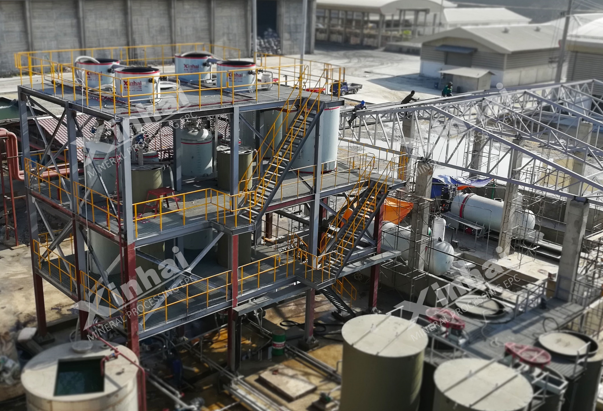Introduction
Graphite, a natural form of crystalline carbon, is an essential material in various industries due to its unique properties such as electrical conductivity, thermal stability, and lubricity. The purification of graphite ore is a critical step in enhancing its value and suitability for specific applications. This comprehensive guide outlines the complete graphite ore purification process, detailing each step and the equipment involved
The purification process begins with the reduction of graphite ore into smaller particles. Primary crushing is typically performed using jaw crushers, while secondary crushing is done using cone crushers or hammer crushers
This stage ensures that the ore is adequately prepared for subsequent grinding and beneficiation.
Post-crushing, the graphite ore undergoes grinding to further decrease the particle size. This is typically achieved using rod mills or grid type ball mills for rough grinding, followed by overflow type ball mills for regrinding
The grinding process is often carried out in a closed circuit with classification to ensure the desired particle size is achieved.

Flotation is a key step in graphite ore purification, targeting the separation of graphite flakes from impurities. Collectors such as kerosene or diesel are used, along with frothing agents like 2# oil. Regulators are added to modify the surface properties of the graphite and impurities, enhancing the selectivity of the flotation process. Specialized flotation machines or flotation columns are employed to carry out this separation
Graphite concentrate obtained from flotation has a carbon content of 90-97%. To achieve high-purity graphite (99% and above), further purification steps are necessary. These may include high-temperature treatment, thermal refining, hydrofluoric acid leaching, or mixed acid leaching. High-temperature methods are particularly favored as they can significantly increase the carbon content
This method involves heating the graphite to temperatures over 2500 °C in an inert atmosphere. The high temperatures volatilize impurities, resulting in a higher purity graphite product. This process, while effective, requires significant energy input and proper equipment to maintain the necessary conditions
Chemical methods such as acid leaching with hydrochloric or sulfuric acid are used to dissolve impurities. Alkaline cleaning with sodium or potassium hydroxide can also be employed to remove acidic impurities. These methods are effective in achieving high purity levels and can be tailored to target specific impurities
Once the graphite has been purified, it may undergo final refining steps to meet specific application requirements. This can include grinding and sizing to achieve the desired particle size distribution, shape modification, surface treatment, or intercalation to modify its properties
The graphite ore purification process is a meticulous sequence of physical and chemical treatments designed to transform raw graphite ore into a high-purity product. Each step, from crushing and grinding to flotation and purification, plays a critical role in enhancing the quality and performance of graphite for its diverse applications. As the demand for graphite continues to grow, particularly in industries such as energy storage and advanced materials, the optimization of these purification processes becomes increasingly important
© 2021 Yantai KZ Mining Processing Technology & Equipment Inc.